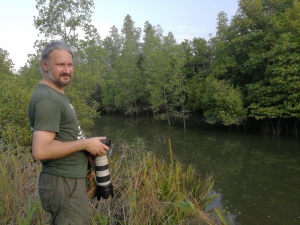Chen, L., Yuan, P., Pozsgai, G., Chen, P., Zhu, H. & You, M. (2019) The impact of cover crops on the predatory mite Anystis baccarum (Acari, Anystidae) and the leafhopper pest Empoasca onukii (Hemiptera, Cicadellidae) in a tea plantation.
Pest Management Science,
75(12), 3371-3380. DOI:10.1002/ps.5489 (IF2019 3,750; Q1 Entomology)
NON-cE3c affiliated
BACKGROUND
Empoasca onukii, the tea green leafhopper, is a key pest of tea whose control often requires the extensive use of insecticides. As a predator of the tea green leafhopper, the mite Anystis baccarum is a potential biological control agent worldwide, though little is known about how intercropping cover crops can impact its suppressing effect on E. onukii. Therefore, we conducted a field experiment to investigate how the relationship of the abundance of the predatory mite and its leafhopper prey is influenced by two different cover crops and a manually weeded inter-row treatment as a contrast to naturally growing vegetation in a tea plantation in China.
RESULTS
The abundance of A. baccarum was significantly higher in tea canopies of intercropped treatments than in canopies over natural ground cover. Litter samples showed higher abundances of A. baccarum when tea was intercropped with Paspalum notatum than with natural ground cover in the first year of treatment. The abundance of E. onukii in tea canopies was higher over the bare ground treatment in the first year but the opposite was observed in the second year.
CONCLUSIONS
Results suggest that the abundance of A. baccarum in a tea plantation is influenced by intercropping and it can affect its leafhopper prey, albeit with varying levels of suppression. For informing biological control and suppression of pests, long-term experiments are needed to investigate the interactions of both pest and predator with cover crop treatments. © 2019 Society of Chemical Industry

